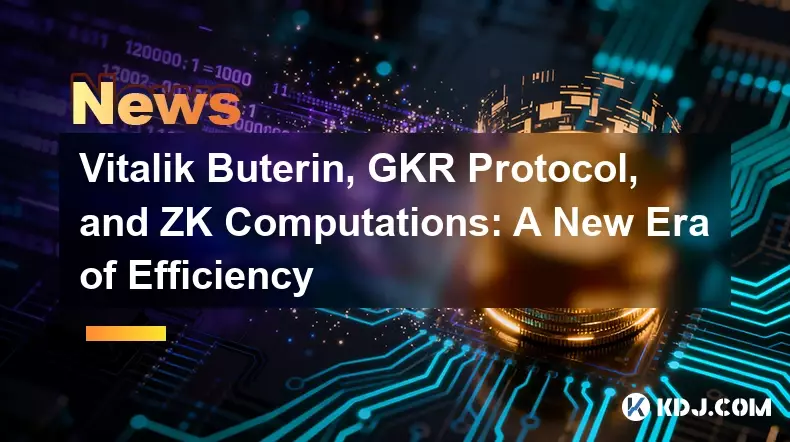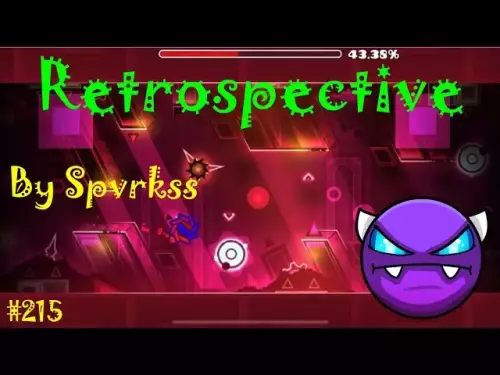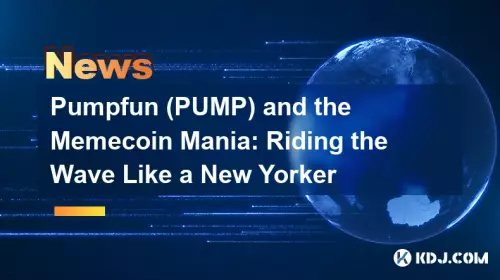Explore Vitalik Buterin's insights on GKR protocol and ZK computations, highlighting their potential to revolutionize Ethereum's scalability and efficiency.

Vitalik Buterin, GKR Protocol, and ZK Computations: A New Era of Efficiency
Vitalik Buterin is consistently pushing the boundaries of Ethereum's capabilities. His recent focus on the GKR protocol and advancements in zero-knowledge (ZK) computations signals a pivotal shift towards enhanced efficiency and scalability within the blockchain space. Let's dive into what this means for the future.
GKR Protocol: A Leap in ZK Computation Efficiency
Buterin introduced the GKR protocol as a powerful tool to optimize traditional zk-SNARK and zk-STARK systems. The GKR protocol, originally proposed in 2010, stands out due to its ability to handle substantial data volumes and verify millions of computations per second without scrutinizing every intermediate step.
The beauty of GKR lies in its applicability to layered, repetitive data operations. Think mass hashing via Poseidon2 or the iterative processes within neural networks. Instead of generating proofs for each calculation stage (like creating Merkle trees for every piece of data in STARK systems), GKR only requires cryptographic commitments for input and output computations. This streamlining has shown to be 15 times more efficient than zk-STARK-based solutions in practice.
The Efficiency Ratio: A Better Way to Measure Cryptographic Performance
Buterin isn't just focused on specific protocols; he's also rethinking how we measure cryptographic performance. He advocates for shifting from the traditional “operations per second” metric to an “efficiency ratio.” This ratio compares computation time using cryptography versus raw computation time, offering a hardware-independent view of the efficiency lost when implementing cryptographic measures.
While acknowledging the challenges in achieving a perfect metric due to varying operations and parallelization capabilities, Buterin believes the overhead factor provides a more meaningful evaluation of cryptographic performance. This approach provides a clearer picture of the true cost of cryptographic enhancements.
Ethereum's ZK-Powered Future
All of this points towards a future where Ethereum is increasingly powered by ZK technology. Crypto investor Ryan Sean Adams envisions Ethereum evolving into a zk-powered chain. The Layer 1 would handle global DeFi with high throughput, while Layer 2 networks manage everything else, from general-purpose applications to specialized appchains. This vision hinges on innovations like the GKR protocol and other ZK advancements making the core network more scalable and allowing nodes to operate even on smartphones.
Recently, Brevis unveiled Pico Prism, a high-performance zkVM for real-time Ethereum block proving. Utilizing 64 RTX 5090 GPUs, it proves 99.6% of blocks in under 12 seconds, averaging 6.9 seconds. This breakthrough could boost Ethereum’s scalability by up to 100×.
Final Thoughts
Vitalik's focus on GKR, coupled with the broader push for ZK computations and better performance metrics, paints an exciting picture for Ethereum's future. It's like Ethereum is finally getting its act together, ready to handle the demands of a truly decentralized world. Keep an eye on these developments—they're about to make things a whole lot faster and more efficient. It's going to be a wild ride, but I am here for it!
Disclaimer:info@kdj.com
The information provided is not trading advice. kdj.com does not assume any responsibility for any investments made based on the information provided in this article. Cryptocurrencies are highly volatile and it is highly recommended that you invest with caution after thorough research!
If you believe that the content used on this website infringes your copyright, please contact us immediately (info@kdj.com) and we will delete it promptly.













































































